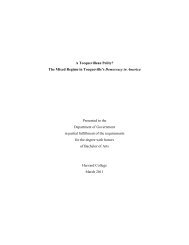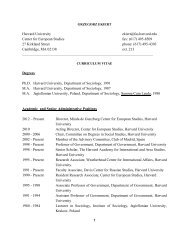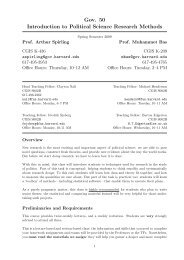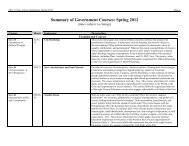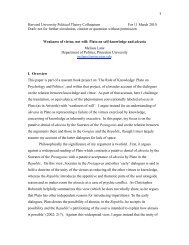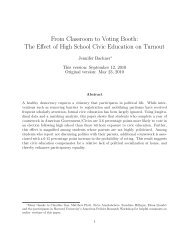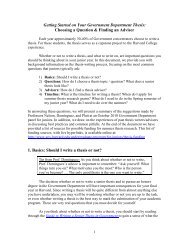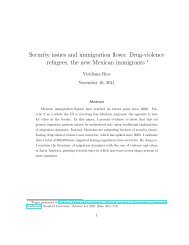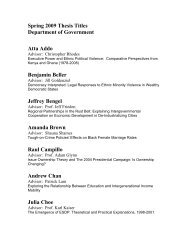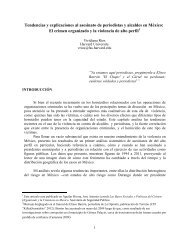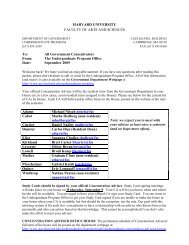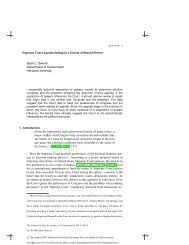Why did Mexico become so violent? - Department of Government ...
Why did Mexico become so violent? - Department of Government ...
Why did Mexico become so violent? - Department of Government ...
Create successful ePaper yourself
Turn your PDF publications into a flip-book with our unique Google optimized e-Paper software.
Author's per<strong>so</strong>nal copy<br />
Trends Organ Crim (2013) 16:138–155 145<br />
Fig. 4 Drug-related homicides by type. Source CSN 2010<br />
Because not all Mexican states have the same probability <strong>of</strong> experiencing<br />
drug-related targeted executions, two controls are meant to measure the extensiveness<br />
<strong>of</strong> drug-trafficking operations within a state. To proxy for the presence<br />
<strong>of</strong> traffickers, cases <strong>of</strong> drug consumption captured by cases <strong>of</strong> overdoses<br />
(INEGI 1990–2008) or hospitalizations due to illegal drug consumption (SecretaríadeSalud2000–2008)<br />
are measured. The assumption underlying this proxy is<br />
simple: although not all <strong>of</strong> the places where drug traffickers operate are known, the<br />
places where traffickers operate for their domestic markets can be approximated by<br />
the location <strong>of</strong> local drug consumption, which is known. Places where traffickers<br />
operate without consumption will remain uncontrolled, but ethnographic analyses<br />
seem to agree that this is quite rare in the case <strong>of</strong> domestic markets. Traffickers serve<br />
these markets as a way <strong>of</strong> dealing with the uncertainty <strong>of</strong> foreign-export drug<br />
markets. At the same time, traffickers themselves tend to be large consumers <strong>of</strong><br />
illegal drugs.<br />
The results <strong>of</strong> the empirical model are displayed in Table 1 and confirm that<br />
competition between traffickers and law enforcement is a significant contributor to<br />
drug-related violence. Three specifications were used: a time series without fixed<br />
effects (model 1), a model with state-level fixed effects (model 2), and a final model<br />
with state and time fixed effects (model 3). All specifications yield the same results.<br />
The preferred model, where both time and state are kept constant, shows that<br />
competition and enforcement, proxied by the variable “confrontations,” are correlated<br />
with an increase <strong>of</strong> 0.979 in the number <strong>of</strong> drug-related targeted executions. Furthermore,<br />
every aggression, defined as instances in which traffickers proactively attacked<br />
Mexican authorities, related to increases <strong>of</strong> 1.75 in the number <strong>of</strong> targeted executions.<br />
The controls behaved as expected although its significance is diminished when fixed<br />
effects were included.<br />
Case studies: Michoacán, Guanajuato, and Guerrero<br />
Case studies can al<strong>so</strong> shed light on the way in which battles for turf and<br />
prosecution lead to violence escalation. In particular, the case <strong>of</strong> La Familia, a<br />
drug-trafficking organization operating in the states <strong>of</strong> Michoacán, Guanajuato,<br />
Guerrero, and <strong>Mexico</strong> State, is known for having played an important role in



